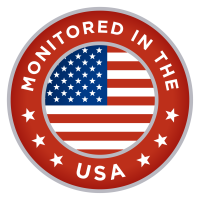How Surveillance Supports OSHA Compliance on Job Sites
Health & Safety Concerns Require Strict Monitoring As Well
The reality of modern construction is that safety and compliance can’t be managed by checklists alone. Technology now plays a direct role in how well a job site functions, especially when it comes to meeting OSHA standards. Surveillance systems have moved beyond basic security. Today, they act as an extension of the safety team by capturing what happens on site, as it happens.
Rather than relying on secondhand accounts or scattered observations, construction managers can reference real-time footage to confirm safe practices, identify violations, or respond quickly when something goes wrong. Construction site surveillance provides objective records of everything happening at your Houston, TX, property.
Upholding Safety Standards with Continuous Monitoring
Efficiency on construction sites hinges on minimizing downtime. Surveillance systems running continuously offer real-time oversight, helping site managers confirm that safety procedures are being followed as crews move through their tasks. This constant stream of footage allows them to spot lapses, correct issues quickly, and maintain a safer, more accountable work environment.
For instance, on an active site, surveillance cameras can check that workers are wearing the appropriate personal protective equipment (PPE) and adhering to posted safety signs. In case of unsafe practices, immediate intervention is possible before any costly accidents. Additionally, should an incident occur, the available footage offers vital insight for analyzing the situation and making necessary changes moving forward.
Documenting Incidents for Compliance and Training
In addition to preventing theft and vandalism, video surveillance aids documentation for OSHA compliance. Many regulations require meticulous records of workplace safety practices. When an incident occurs, having recorded footage becomes essential for verifying the circumstances surrounding it.
If you ever have a scenario where two workers provide conflicting accounts of an accident, video evidence can clarify what transpired. This documentation also acts as an additional resource for internal training. By analyzing recorded footage of common hazards and safety violations, companies can develop better training programs.
Enhancing Emergency Responses and Safety Plans
Quick and effective emergency response is vital on any construction site. Incidents can occur without warning, and the ability to respond rapidly can mitigate damage and injuries. Surveillance bolsters emergency protocols by providing immediate visual assessments.
Site managers can monitor incidents as they unfold by employing real-time video feeds. For example, if a worker experiences an accident, surveillance can pinpoint the exact location and condition of those involved and facilitate swift action from emergency responders. The use of advanced features such as facial recognition and thermal imaging further enhances this process by identifying specific workers in the affected area.
Moreover, clear site visibility aids in future safety planning and risk assessments. Understanding where issues have arisen allows managers to refine safety measures in those areas.
Are you ready to enhance safety and compliance at your construction site? Contact Cameras Onsite today to discover how our advanced mobile surveillance solutions help you meet your compliance goals.



